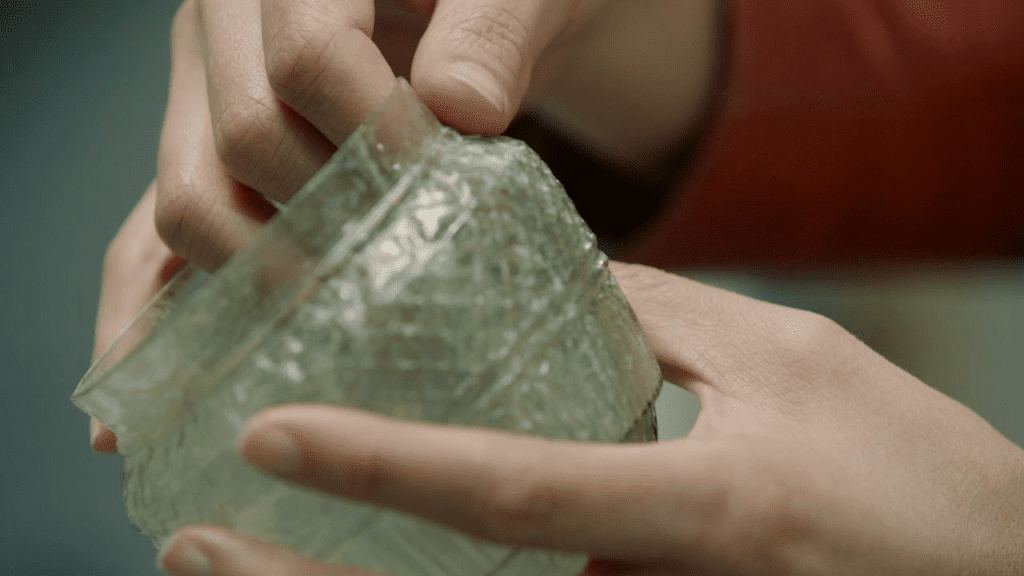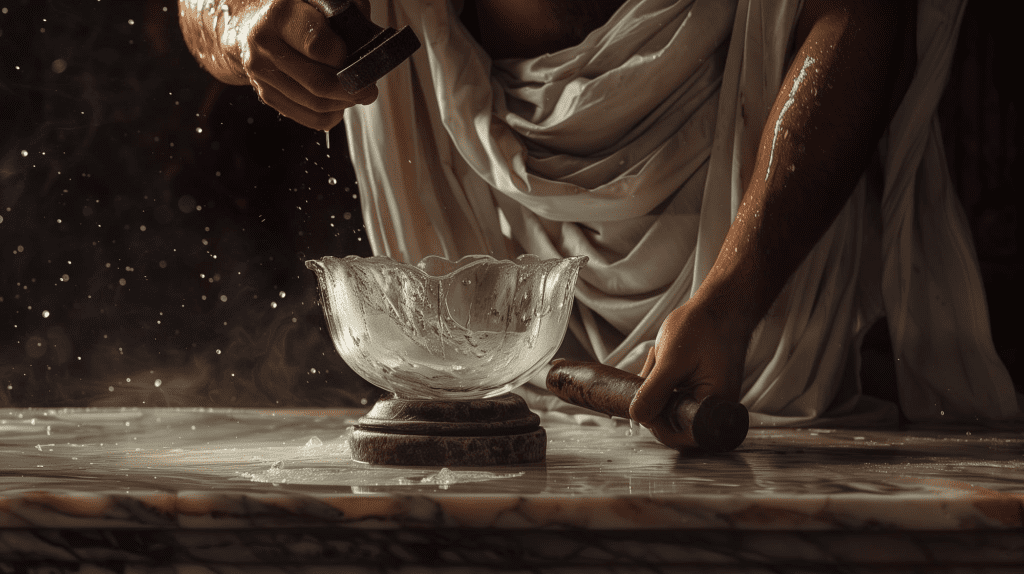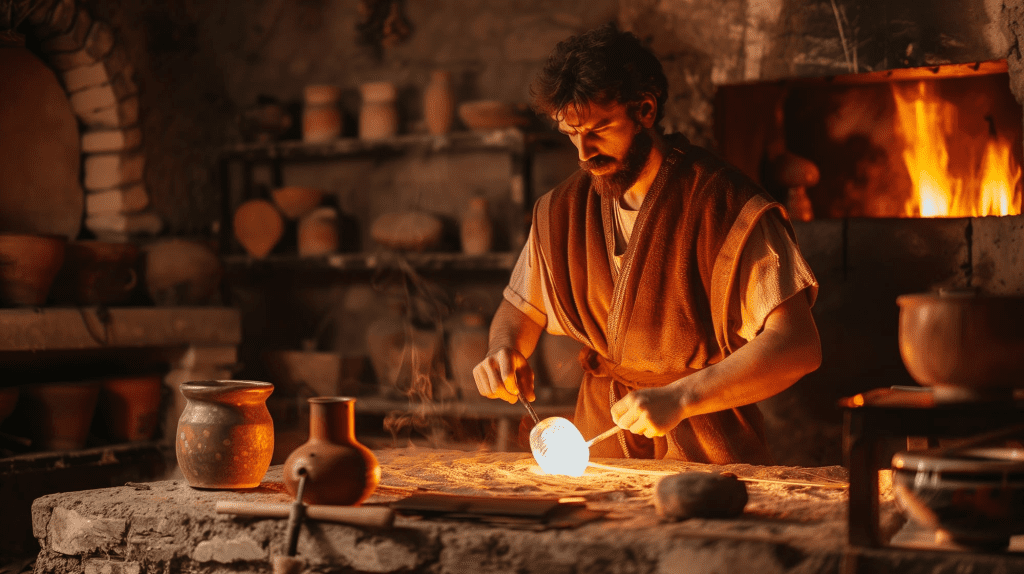In a world obsessed with innovation, it’s easy to forget that some of our most cutting-edge technologies have ancient roots. One such story half legend, half cautionary tale dates all the way back to Ancient Rome. It’s a tale of genius, fear, and the high cost of progress. Long before Gorilla Glass revolutionized modern smartphones, a mysterious inventor in Rome is said to have created something remarkable: unbreakable glass.

The Roman Secret That Was Too Dangerous to Exist
The story begins during the reign of Emperor Tiberius, who ruled Rome in the early first century CE. A craftsman came before the emperor with a goblet unlike any seen before. It looked like glass clear, smooth, elegant but when he dropped it, it didn’t shatter. Instead, it merely dented. With a small hammer, he reportedly repaired it on the spot.

Tiberius was stunned. But instead of rewarding the inventor, he was gripped by fear. If such a material became widespread, the emperor worried, it would render precious metals like gold and silver practically worthless. After all, what value would fragile glass or even costly metals hold against something that was beautiful, reusable, and practically indestructible?
According to ancient texts, Tiberius had the man executed and his workshop destroyed, ensuring the formula for the magical material would die with him. Historians debate whether the story is fact or myth, but the lesson is clear: sometimes, society isn’t ready for revolutionary ideas.
Video:
Unraveling the Mystery of Roman Unbreakable Glass Created Thousands of Years Ago
A Comeback Centuries Later
Fast forward nearly 2,000 years, and unbreakable glass finally got its second chance this time without a deadly ending.
In 2006, Corning Inc., an American company with roots stretching back to the 1800s, unveiled a new kind of toughened glass. Originally developed decades earlier under the name “Project Muscle,” it hadn’t found commercial use until mobile tech exploded. Rebranded as Gorilla Glass, this ultra-strong, scratch-resistant material became a core feature in smartphones, tablets, and laptops.

Today, it’s used in billions of devices around the world. Apple, Samsung, and many other tech giants depend on it to keep screens intact through daily drops and rough handling. Gorilla Glass has even expanded into automotive, medical, and military industries, proving just how useful and versatile modern unbreakable glass can be.
What Makes Gorilla Glass So Special?
Unlike ordinary glass, Gorilla Glass is made using an ion-exchange process. Large potassium ions replace smaller sodium ions in the glass, creating a surface that’s not only incredibly strong but also highly resistant to scratches and cracking. It’s thin, light, and surprisingly flexible making it ideal for modern technology.
This combination of resilience and beauty mirrors what the Roman inventor had once offered: a material that could change everything.
Video:
15 Incredible Ancient Roman Inventions
A Lesson in Innovation and Fear
Looking back, the tale of Rome’s unbreakable glass is more than a quirky anecdote it’s a reminder of how fear can sometimes hinder progress. While Tiberius may have acted out of economic self-preservation, he also silenced a potential breakthrough that might have advanced human technology centuries earlier.
Thankfully, today’s inventors live in a different world one that’s far more open to innovation, risk-taking, and reinvention.

Full Circle
From a Roman goblet that defied gravity to sleek modern smartphones that slip into our pockets, the story of unbreakable glass has come full circle. Though the ancient formula was lost to history, its spirit lives on in every screen that survives a fall.
In the end, perhaps the most unbreakable thing isn’t the glass itself it’s the human drive to create, destroy, and create again.


